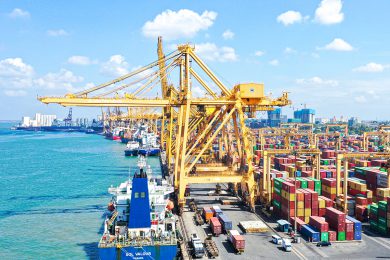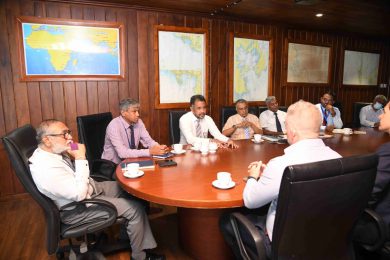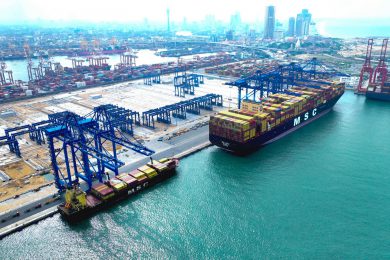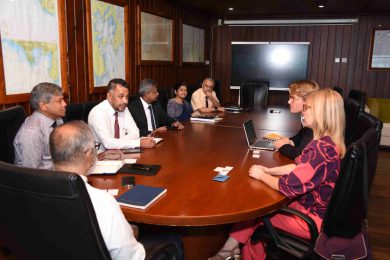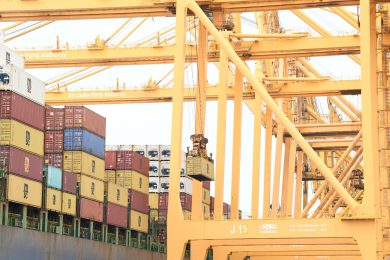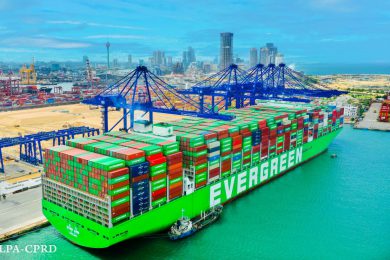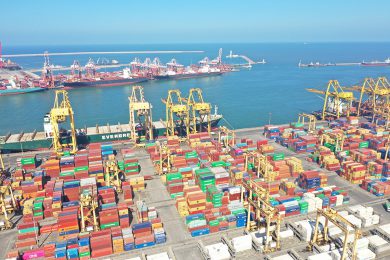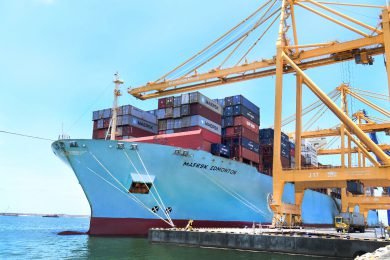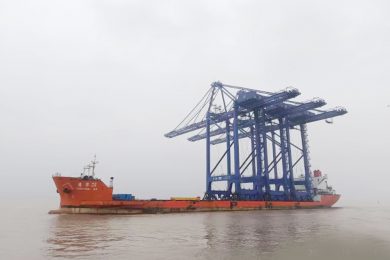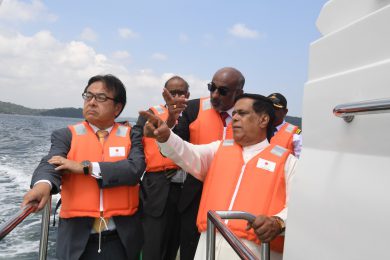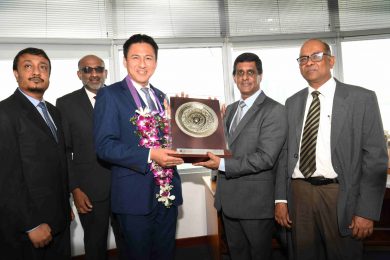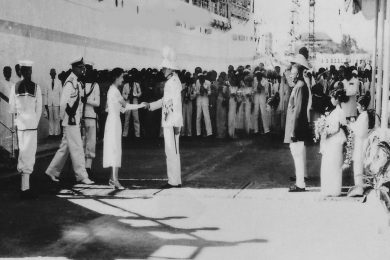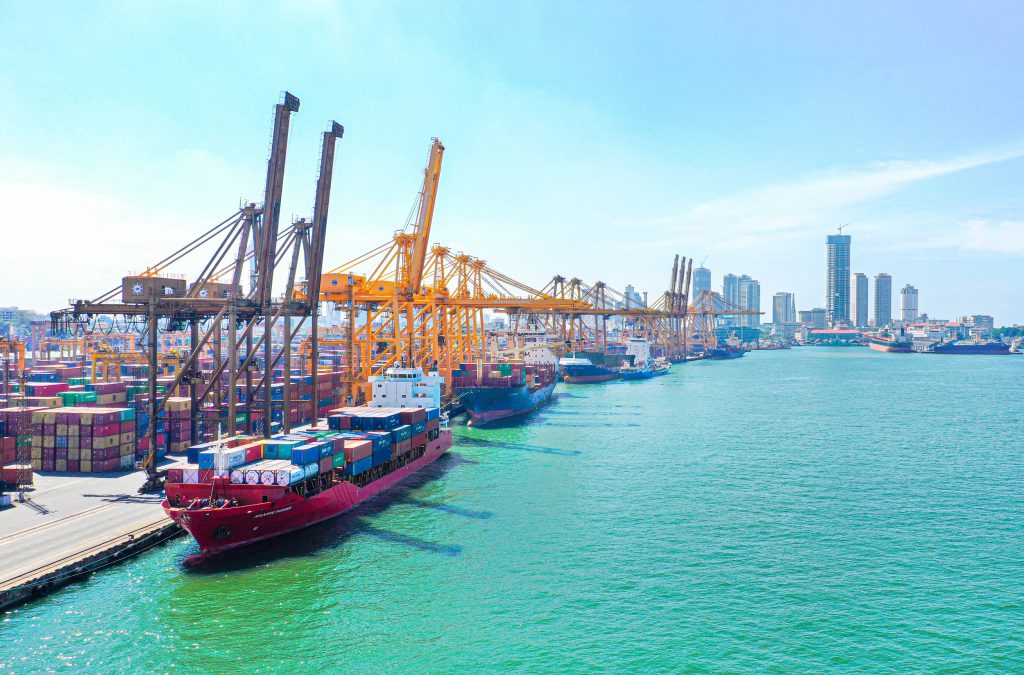Reflecting on 45 years of Sri Lanka Ports Authority’s transformative impact on Sri Lanka’s ports while envisioning continued growth and excellence in the maritime sector
by Nilantha Ilangamuwa
Governor Joseph West Ridgeway, in Review of Administrative Affairs of Ceylon (1896-1903), lauded Colombo Harbour as one of the colony’s greatest assets, emphasising its status as one of the finest artificial harbours globally. Strategically situated at the crossroads of the Indian Ocean, Sri Lanka has long been a pivotal maritime hub. From the ancient Port of Mantai to the prominence of Galle and Colombo, this island nation has played a central role in maritime trade. As we celebrate the 45th anniversary of the Sri Lanka Ports Authority (SLPA), we honour this rich history and renew our commitment to future goals.
Sri Lanka’s maritime narrative was profoundly shaped by British colonisation, which commenced in 1795 with the British East India Company. Driven by geopolitical interests, the British seized key ports and forts from the Dutch, culminating in the Dutch surrender of 1796. The strategic significance of Sri Lanka was further highlighted by conflicts between Britain and France, underscoring the island’s value. By 1802, Ceylon had become a British crown colony, cementing British control until 1948 and fostering the development of formal port engineering that revolutionised Sri Lanka’s maritime infrastructure.
Despite its potential, Colombo Harbour endured neglect, with improvements failing to keep pace with regional economic growth. Until 1870, the harbour remained an open roadstead, described as “depressing” and limited in capacity. Nevertheless, increasing vessel traffic and tonnage during this period reflected growing confidence in Colombo’s port, driven by expanding trade despite its noted limitations. According to B. L. Panditharatna, with linguistic insights from J. de Lanerolle of the Royal Asiatic Society, the natural and shallow bay (Kol-amba opposite of Dia-amba) extending northwards was formed by the curvature of the coastline from Fort’s head to Mutwal Point, providing anchorage for the ships of the Muslims, Portuguese, Dutch, and British.
Colombo’s port development was shaped by its geography and the rising demand for export-oriented agricultural products. Although the natural bay provided anchorage, it was vulnerable to adverse weather, necessitating the construction of breakwaters. By 1900, significant enhancements, including the completion of breakwaters and new facilities, established Colombo as a major maritime hub. The completion of the South West Breakwater in 1885, designed by Sir John Coode, was a landmark achievement. Despite delays due to Coode’s death in 1892, additional breakwaters were completed, significantly enhancing Colombo’s capacity to handle increasing maritime traffic.
By 1910, Colombo Port, known as ‘The Clapham Junction of the East,’ was the seventh busiest port globally by tonnage, surpassing major ports such as Liverpool and Singapore. This prominence followed major improvements from 1885 onwards, including breakwater construction and dredging, transforming Colombo into a symbol of British industrial progress. Its strategic location on the route between Australia and the Suez Canal, coupled with its role as an entrepôt for the Indian subcontinent, bolstered its importance in trade, tourism, and communications.

The strategic decision to prioritise Colombo over Galle in port improvements stemmed from Galle’s lack of transport links to the hinterland, making it less advantageous for Sri Lanka’s economic interests. Enhancing Galle would have incurred substantial costs for visiting ships and burdened the colony with excessive expenses. The projected costs and feasibility concerns regarding breakwaters and other infrastructure at Galle led to a focus on developing Colombo instead. Colombo, with its larger sheltered area, offered better prospects for increased traffic post-Suez Canal’s opening. Financial analyses revealed Galle’s revenue could not cover its costs, while Colombo showed significant revenue growth potential with improvements. Governor Sir Hercules Robinson’s persuasive arguments and the feasibility of a development plan led to Colombo’s selection for enhancement, with construction beginning in 1875 and transforming the port’s shipping composition by the late 1870s.
The development strategy, as detailed by esteemed scholars B. L. Panditharatna (The Harbour and Port of Colombo: A geographical Appraisal of Its Historical and Functional Aspects) and K. Dharmasena (The Port of Colombo, 1860-1939), leading authorities on maritime economics and port construction in Sri Lanka, pivoted to Plan ‘B.’ This ambitious plan aimed to extend the South-West Breakwater and build a new breakwater near Mutwal, effectively creating a closed harbour of 502 acres. Their accounts further specify that Plan ‘B’ encompassed the construction of jetties, land reclamation for coal wharves, and extensive dredging, with a projected cost of £1,008,458. However, due to financial limitations, only a portion of Plan ‘B’ was realized, with a revised budget of £712,593, prioritizing the extension of the South-West Breakwater and postponing other elements until trade growth and financial stability allowed for their execution.
Sir John Coode’s task of constructing the South-West Breakwater involved innovative methods and large concrete blocks to withstand ocean swells. Despite the high costs, these efforts ensured the breakwater’s durability, significantly contributing to Colombo’s development as a major port. This infrastructure bolstered Colombo’s role as a key maritime hub and maintained its status as a healthy and profitable port.
The transformation of Colombo Port began in 1912, converting it into a sheltered harbour and marking a new era in maritime history. The establishment of the Colombo Port Commission in 1913 and subsequent developments, including the Queen Elizabeth Quay in 1954, the Port (Cargo) Corporation in 1958, and the creation of the Sri Lanka Ports Authority (SLPA) in 1979, highlighted the port’s growing capacity. Key milestones included the inauguration of the Queen Elizabeth Terminal in 1980, the New Bridge (Hartal Bridge) in 1982, and continued expansion with new terminals and facilities, establishing SLPA as a leading container hub in the region.
The turn of the millennium saw significant developments with the commencement of the Colombo South Harbour feasibility study and the construction of the third berth in Galle Port. This period also saw the inauguration of the Peliyagoda Container Freight Station (CFS) and the initiation of the North Pier Development Phase II. The opening of the One-Stop Documentation Centre in 2000 played a crucial role in streamlining port operations and enhancing service delivery.
In 2001, advancements included the inauguration of a new jetty in Galle Port and the completion of Stage I of the QEQ (SAGT) development project in Colombo Port. The commissioning of the dredger Hansakawa and the expansion of gantry cranes at JCT III and IV underlined our commitment to maintaining cutting-edge port facilities. The early 21st century marked a period of rapid expansion, with the commencement of the Hambantota Port feasibility study and the establishment of a new training institute in 2001, followed by the inauguration of the Ashraff Quay in Trincomalee in 2002.

Subsequent years saw continued growth and innovation, with the opening of a customer service centre for LCL cargo and the SLPA Maritime Museum in 2003. Milestones included the completion of the Unity Container Terminal and reaching 2.2 million TEUs at Colombo Port by 2004. The construction of Oluvil Port and the handling of 2.45 million TEUs by Colombo Port in 2005 highlighted our expanding capacity. This period also included the launch of the Container Security Initiative and various agreements for port expansion projects.
The years 2010 to 2017 were transformative, marked by the inauguration of the Magampura Port (Hambantota) and the Colombo International Container Terminal (CICT). Key achievements included handling two million containers at Jaya Container Terminal in 2010 and the 6 millionth TEU at Colombo Port in 2017.
In 2018, SLPA made significant strides with the completion of the final tranche under the Hambantota Port Concession Agreement, ensuring the project’s financial stability. The Port of Colombo, through a collaborative Memorandum of Understanding with South Asia Gateway Terminals (SAGT) and Colombo International Container Terminals (CICT), garnered global recognition. In 2019, the Port of Colombo achieved a milestone by handling 7 million TEUs and celebrated SLPA’s 40th anniversary, reflecting four decades of growth. The year 2020 saw the commissioning of the East Container Terminal and Phase V of the Jaya Container Terminal. Expansion continued in 2021 with the foundation stone for a new Container Freight Station and the recognition of female crane operators. Upgrading to the state-of-the-art N4 Terminal Management System, SLPA was ranked as the top port in South Asia. In 2022, SLPA initiated the second phase of the Colombo East Container Terminal construction. The success continued into 2023, with SLPA receiving top accolades, reinforcing its role as a leading maritime authority and key economic driver.
As we celebrate the 45th anniversary of the SLPA, we reflect on our remarkable journey of growth and envision future development for Sri Lanka’s key ports, including Colombo, Galle, Trincomalee, Kankesanthurai, and Oluvil.
The Port of Colombo remains a premier maritime hub in South Asia, strategically positioned along vital shipping routes in the Indian Ocean. Its advanced facilities, such as the Jaya, Unity, and Colombo East Container Terminals, as well as the Bandaranaike Quay, accentuate its significance. Public-private partnerships, including those with SAGT, CICT, and WICT, have significantly boosted its global competitiveness, establishing Colombo as a critical maritime logistics node. The ongoing development project is strategically designed to foster the growth of the Colombo Port, aiming for significant milestones in the coming years. By 2026, the Port of Colombo aims to handle over 14 million TEUs, demonstrating its commitment to enhancing capacity and efficiency. This goal reflects a dedication to improving the global supply chain and boosting the national economy. Looking further ahead, the vision is to handle 35 million TEUs by 2040, positioning Colombo Port as a leading hub in the global maritime industry.
Trincomalee Harbour, on Sri Lanka’s northeastern coast, is renowned for its extensive and sheltered waters, making it ideal for large vessels. Development plans aim to transform it into a major industrial port, leveraging its strategic location and proximity to Asian markets. Meanwhile, the Port of Galle, with its rich cultural heritage and potential for tourism, is set to become a premier destination for cruise ships and leisure travellers through ongoing investments in facilities and infrastructure.
Kankesanthurai Harbour and the Port of Hambantota are also focal points of development. Kankesanthurai is being upgraded to enhance its role as a gateway for passenger ferries between Sri Lanka and India, while Hambantota focuses on Roll-On/Roll-Off (Ro-Ro) operations and vessel replenishment. Established in 2013, Oluvil Harbour is poised for growth with new facilities and a focus on regional connectivity. Additionally, the revitalisation of Talaimannar Pier aims to restore crucial maritime links between Sri Lanka and India, enhancing cross-border travel and trade.
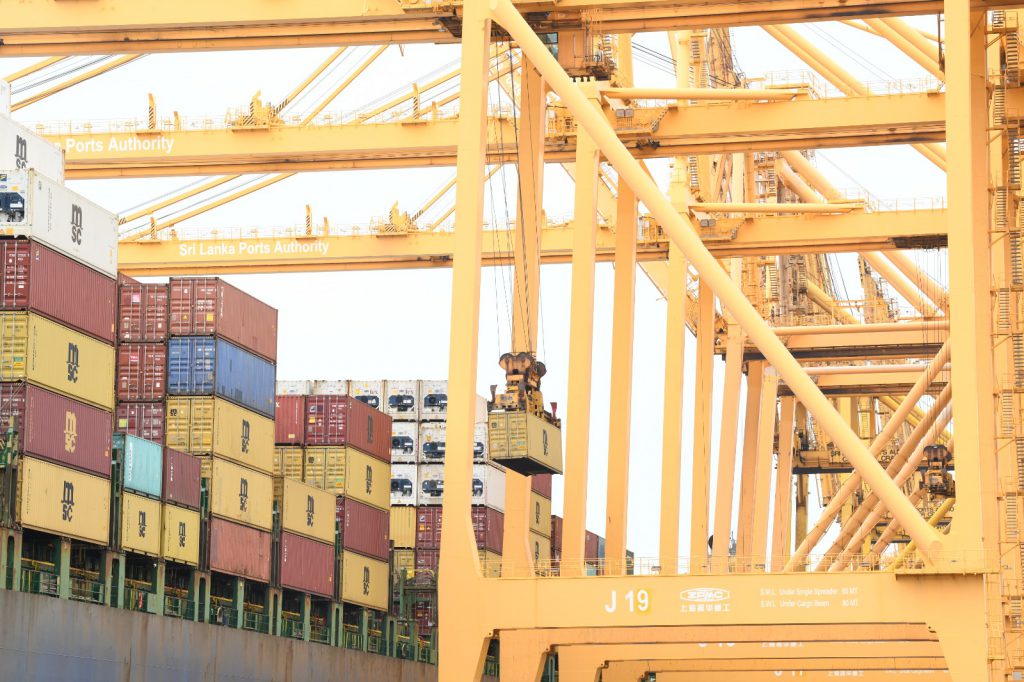
Today’s achievements reflect the tireless dedication and hard work of countless individuals, echoing Seneca’s notion that “Luck is what happens when preparation meets opportunity.” The remarkable success of the SLPA accentuates the profound efforts of our workforce, who have turned opportunities into significant milestones. The Port of Colombo’s recent recognition as the best-performing port globally for the first quarter of 2024, with a growth rate of 23.6% (Alphaliner), highlights our exceptional performance. The Port of Colombo has also seen impressive growth in domestic and transshipment volumes, thanks to the outstanding performance of SLPA terminals.
As we celebrate this significant anniversary, Henry Ford’s profound words—”Coming together is a beginning; keeping together is progress; working together is success”—resonate deeply. With a unified vision and unwavering collective effort, SLPA is poised to remain the cornerstone of Sri Lanka’s maritime and economic future. Our operations and services amplify the nation’s importance on both national and international stages, with the prosperity of our ports intrinsically linked to the country’s overall development and success.
[The writer is a senior manager at the Sri Lanka Ports Authority. The views expressed are personal.]



